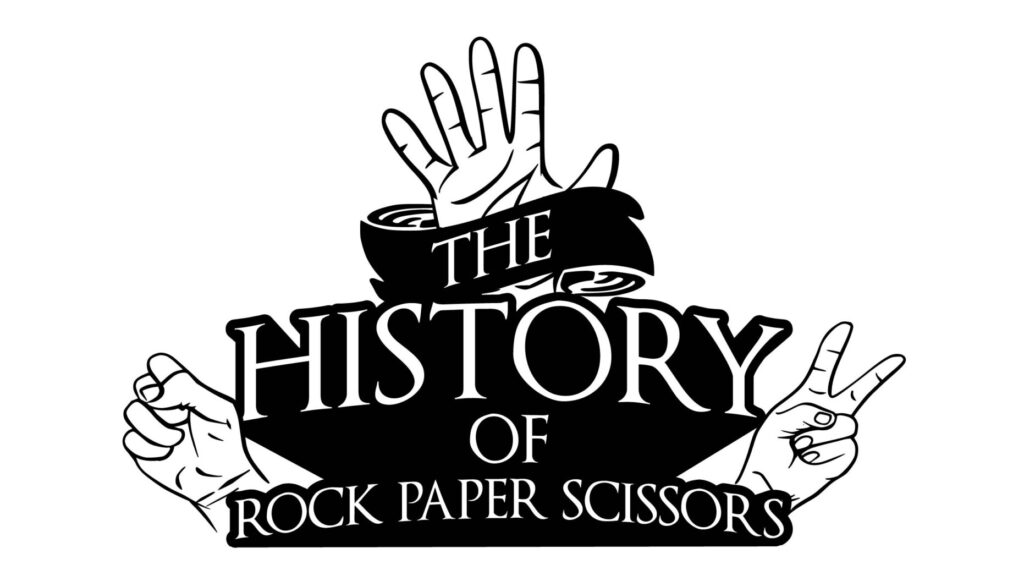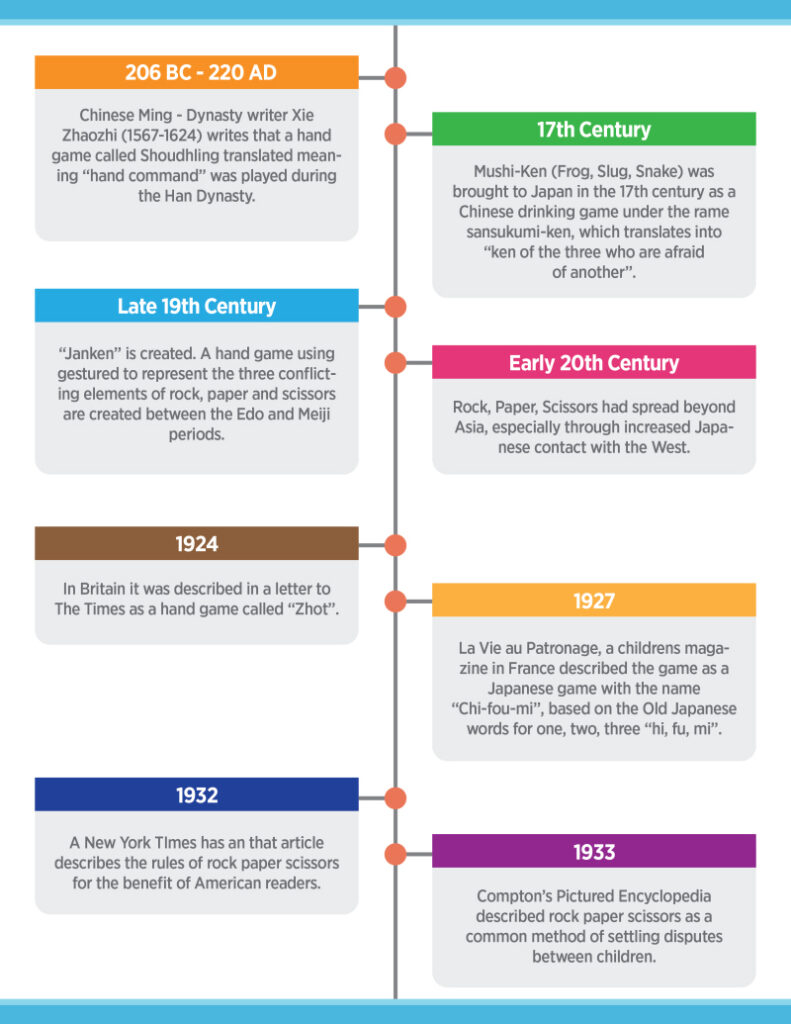
The World Rock Paper Scissors Association has delved deep into the origins and history of Rock Paper Scissors (RPS), one of the oldest and most popular hand games worldwide. Our quest has led us to explore the game’s invention, the evolution of its rules, and its spread across continents. Get ready to discover the fascinating story behind this legendary game and level up your RPS skills with the official rules.
Rock Paper Scissors: Tracing Its Roots in Asia
The first known mention of RPS can be found in the Chinese book ‘Wuzazu,’ written by Xie Zhaozhi during the Ming dynasty. Xie claims that the game, referred to as shoushiling, dates back to the Han dynasty (206 BC – 220 AD). Another Chinese literary reference to RPS is Li Rihua’s book ‘Note of Liuyanzhai,’ where the game is called shoushiling, huozhitou, or huoquan.
Throughout Japanese history, “sansukumi-ken” is frequently mentioned. This term translates to “three-way deadlock fist games,” where A beats B, B beats C, and C beats A. These games were initially created in China and later imported to Japan, where they gained more popularity.
The earliest Japanese “sansukumi-ken” game, “mushi-ken,” was directly imported from China. It features a “frog” (thumb) defeated by a “slug” (little finger), which is beaten by a “snake” (index finger), which in turn loses to the “frog.” Although the Japanese version has different animal representations, it shares the same underlying structure.
Janken: The Birth of Modern Rock Paper Scissors
The modern version of RPS, known as Janken, emerged in Japan as a variation of the Chinese games introduced in the 17th century. Janken incorporates the now-familiar rock, paper, and scissors signs. Hand games using gestures to represent these three elements became increasingly common since the late 19th century, between the Edo and Meiji periods.
By the early 20th century, RPS had spread beyond Asia, primarily due to increased Japanese contact with the West. The game’s English name derives from the translation of the Japanese hand gestures for rock, paper, and scissors. In other parts of Asia, the open-palm gesture signifies “cloth” instead of “paper,” and the scissor shape is also adopted from the Japanese style.
RPS Goes Global: Europe and America
In 1924, a letter to The Times described RPS as a hand game called “zhot,” possibly of Mediterranean origin. A reader responded, identifying the game as Jan-ken-pon, which they had often seen played throughout Japan. At this time, RPS was still relatively unknown in Britain.
In 1927, the French children’s magazine La Vie au patronage detailed the game, calling it a “jeu japonais” (Japanese game). Its French name, “Chi-fou-mi,” is based on the Old Japanese words for “one, two, three.”
In 1932, The New York Times published an article on Tokyo’s rush hour, describing the game’s rules for American readers. It was not yet widely known in the United States. The 1933 edition of Compton’s Pictured Encyclopedia described RPS as a common method of settling disputes among Japanese children, with the name “John Kem Po.”
Rock Paper Scissors: The Timeless Classic
Of all the sansukumi-ken games, RPS remains one of the few still popular in modern Japan. Its global success is attributed

References
- Culin, Stewart. (1895). Korean Games: With Notes on the Corresponding Games of China and Japan. Philadelphia: University of Pennsylvania. Link: https://archive.org/details/koreangameswith01culigoog/page/n4/mode/2up
This book, published in 1895, discusses various games in Korea, China, and Japan, including hand games similar to Rock Paper Scissors. It provides some insight into how the game might have been introduced to the Western world.
- The Times (1924). Letters to the Editor. London. Link: http://find.galegroup.com/ttda/infomark.do?&source=gale&prodId=TTDA&userGroupName=rtl_ttda&tabID=T003&docPage=article&searchType=AdvancedSearchForm&docId=CS101665920&type=multipage&contentSet=LTO&version=1.0
This letter to the editor of The Times newspaper in 1924 describes the game “zhot,” which the reader identifies as the Japanese game Jan-ken-pon. This source suggests that the game was relatively new to Britain at the time.
- La Vie au patronage (1927). Paris: Éditions du Chalet. Link: https://gallica.bnf.fr/ark:/12148/bpt6k9609676t/f1.item.r=jeu%20japonais%20chi%20fou%20mi.zoom
In this 1927 French children’s magazine, the game is described as a “jeu japonais” (Japanese game) called “Chi-fou-mi,” based on the Old Japanese words for “one, two, three.” This article provides evidence of the game’s introduction to France.
- The New York Times (1932). “Subway Crowds Puzzle Tokyo: Native Rush Hour Solution to Problem of Choosing Seats Is Called ‘Japanese Scissors.'” Link: https://timesmachine.nytimes.com/timesmachine/1932/01/31/105792619.html?pageNumber=22
In this 1932 article, The New York Times describes the rules of the game for American readers, suggesting that it was not yet widely known in the United States.